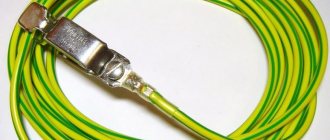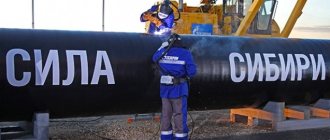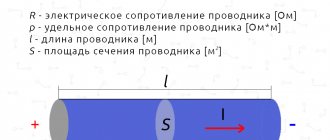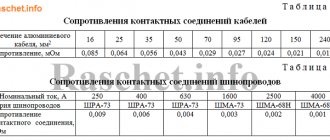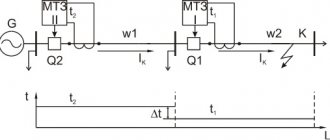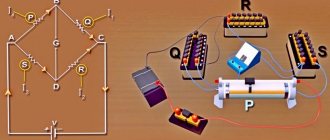Calculation of wire length for a spiral
Required heater power W Supply voltage V
Select material
Select the wire diameter from standard industrial sizes.
mm
The results obtained do not take into account the increase in the electrical resistance of the conductor with increasing temperature. Therefore, the actual power (as well as the current consumption from the network) is always slightly lower than the calculated values.
Calculation of weight and length
11.3040
Calculate
Nichrome and fechral are the most common materials for creating a resistive heater. Nichrome (specifically Nichrome 80) is made from a mixture of nickel and chromium. Fechral or otherwise known as Kanthal is an iron-chromium-aluminum (FeCrAl) alloy.
Basic information and brands of nichrome
Nichrome is an alloy of nickel and chromium with additions of manganese, silicon, iron, and aluminum. The parameters of this material depend on the specific ratio of substances in the alloy, but on average they lie within the limits:
- specific electrical resistance - 1.05-1.4 Ohm*mm 2 /m (depending on the brand of alloy);
- temperature coefficient of resistance - (0.1-0.25)·10 −3 K −1;
- operating temperature - 1100 °C;
- melting point - 1400°C;
In tables, resistivity is often given in µOhm*m (or 10 -6 Ohm*m) - the numerical values are the same, the difference is in dimension.
Currently, there are two most common brands of nichrome wire:
- Х20Н80. It consists of 74% nickel and 23% chromium, as well as 1% each of iron, silicon and manganese. Conductors of this brand can be used at temperatures up to 1250 ᵒ C, the melting point is 1400 ᵒ C. It is also characterized by increased electrical resistance. The alloy is used for the manufacture of elements of heating devices. Specific resistance – 1.03-1.18 µOhm m;
- Х15Н60. Composition: 60% nickel, 25% iron, 15% chromium. Operating temperature is no more than 1150 ᵒ C. Melting point – 1390 ᵒ C. Contains more iron, which increases the magnetic properties of the alloy and increases its anti-corrosion resistance.
You will learn more about the grades and properties of these alloys from GOST 10994-74, GOST 8803-89, GOST 12766.1-90 and others.
As already mentioned, nichrome wire is used everywhere where heating elements are needed. High resistivity and melting point make it possible to use nichrome as a base for various heating elements, from a kettle or hair dryer to a muffle furnace.
Resistivity of nichrome and other alloys for heaters
Typically, common steels and alloys such as stainless steel prevent the passage of electricity. This property term is known as resistivity
. In Russia, as elsewhere in Europe, it is customary to use Ohms per mm2 per m to describe resistivity; in other countries, Ohms cm/ft or Ohms multiplied by circular miles per foot Ohms/cmf can also be used.
If resistivity alone were considered as the primary factor for an electric heating element, there would be several alloy materials to choose from with a wide range of costs. Due to its extreme nature, the electric heating element often becomes red hot and conventional alloys cannot withstand this amount of heat
over a long period.
Families of heater alloys have a combination of two specific properties:
- High electrical resistance
- Long service life, endurance potential as a heating material
These groups of alloys can be divided into six main classes. In this article we will look at alloys such as nichrome. The main grades of these alloys are shown with an indication of their composition and resistivity of nichrome.
| Nickel-chromium alloys | |||
| 80 nickel 20 chrome | 1.0803 Ohm mm2/m | 650 Ohms/cmf | |
| 70 nickel 30 chrome | 1.18002 Ohm mm2/m | 710 Ohms/cmf | |
| 60 Nickel 16 Chrome 24 Iron | 1.12185 Ohm mm2/m | 675 Ohms/cmf | |
| 35 Nickel 20 Chrome 45 Iron | 1.01382 Ohm mm2/m | 610 Ohms/cmf | |
| Iron-Chrome-Aluminum | |||
| 22 Chrome 5 Aluminum 73 Iron | 1.45425 Ohm mm2/m | 875 Ohms/cmf | |
| 22 Chrome 4 Aluminum 74 Iron | 1.35453 Ohm mm2/m | 815 Ohms/cmf | |
| 15 Chrome 4 Aluminum 81 Iron | 1.2465 Ohm mm2/m | 750 Ohms/cmf | |
| Copper-nickel alloys for low temperature applications | |||
| 45 Nickel 55 Copper | 0.4986 Ohm mm2/m | 300 Ohms/cmf | |
| 22 Nickel 78 Copper | 0.2991 Ohm mm2/m | 180 Ohms/cmf | |
| 11 Nickel 89 Copper | 0.1495 Ohm mm2/m | 90 Ohms/cmf | |
| 6 Nickel 94 Copper | 0.0997 Ohm mm2/m | 60 Ohms/cmf | |
| 2 nickel 98 Copper | 0.0498 Ohm mm2/m | 30 Ohms/cmf | |
| Stainless steel and various alloys for low temperature applications | |||
| Nickel Manganese 94 Nickel 5 Manganese | 0.1695 Ohm mm2/m | 102 Ohms/cmf | |
| 99.98 nickel | 0.0748 Ohm mm2/m | 45 Ohms/cmf | |
| Monel 67 Nickel 30 Copper | 0.48198 Ohm mm2/m | 290 Ohms/cmf | |
| Nickel Silicon 3 Silicon Scales Nickel | 0.31578 Ohm mm2/m | 190 Ohms/cmf | |
| UNS S30400 18 Chrome 8 Nickel 74 Iron | 0.71965 Ohm mm2/m | 433 Ohms/cmf | |
Calculation methods
By resistance
Let's figure out how to calculate the length of nichrome wire based on power and resistance. The calculation begins with determining the required power. Let's imagine that we need a nichrome thread for a small soldering iron with a power of 10 W, which will operate from a 12V power supply. For this we have wire with a diameter of 0.12 mm.
The simplest calculation of the length of nichrome by power without taking into account heating is performed as follows:
Let's determine the current strength:
We calculate the resistance of nichrome wire according to Ohm's law:
The length of the wire is:
where S is the cross-sectional area, ρ is the resistivity.
Or using this formula:
But first you need to calculate the resistivity for nichrome wire with a diameter of 0.12 mm. It depends on the diameter - the larger it is, the less resistance.
The same can be taken from GOST 12766.1-90 table. 8, where the value of 95.6 Ohm/m is indicated, if you recalculate it, you get almost the same thing:
For a 10 watt heater powered by 12V, you need 15.1cm.
If you need to calculate the number of turns of a spiral to make it from nichrome wire of this length, then use the following formulas:
Length of one turn:
where L and d are the length and diameter of the wire, D is the diameter of the rod on which the spiral will be wound.
Let's say we wind nichrome wire on a rod with a diameter of 3 mm, then we carry out the calculations in millimeters:
But at the same time, it is necessary to take into account whether nichrome of such a cross-section is even capable of withstanding this current. Detailed tables for determining the maximum permissible current at a certain temperature for specific sections are given below. In simple words, you determine how many degrees the wire should heat up to and select its cross-section for the calculated current.
Also note that if the heater is located inside a liquid, then the current can be increased by 1.2-1.5 times, and if in a confined space, then vice versa, it can be reduced.
By temperature
The problem with the above calculation is that we calculate the resistance of the cold spiral by the diameter of the nichrome thread and its length. But it depends on the temperature, and you also need to take into account under what conditions it will be possible to achieve it. While such a calculation is still applicable for cutting foam plastic or for a heater, it will be too rough for a muffle furnace.
Let us give an example of calculations of nichrome for a furnace.
First, determine its volume, say 50 liters, then determine the power, for this there is a rule of thumb:
- up to 50 liters – 100 W/l;
- 100-500 liters – 50-70 W/l.
Temperature coefficient of resistance
The current resistance, expressed in ohms, for a particular alloy depends on the temperature of the alloy. This deviation is indicated as a percentage of the actual room temperature resistance. Generally, resistance increases as temperature increases, so a wire heating element has a resistance of 1 ohm at room temperature (20°C or 68°F), can reach a resistance of up to 1.08 ohm at 650°C or 1202°F, hence resistance increases by 8% due to heating.
Basic information and brands of nichrome
Nichrome is an alloy of nickel and chromium with additions of manganese, silicon, iron, and aluminum. The parameters of this material depend on the specific ratio of substances in the alloy, but on average they lie within the limits:
- specific electrical resistance - 1.05-1.4 Ohm*mm 2 /m (depending on the brand of alloy);
- temperature coefficient of resistance - (0.1-0.25)·10 −3 K −1;
- operating temperature - 1100 °C;
- melting point - 1400°C;
In tables, resistivity is often given in µOhm*m (or 10 -6 Ohm*m) - the numerical values are the same, the difference is in dimension.
Currently, there are two most common brands of nichrome wire:
- Х20Н80. It consists of 74% nickel and 23% chromium, as well as 1% each of iron, silicon and manganese. Conductors of this brand can be used at temperatures up to 1250 ᵒ C, the melting point is 1400 ᵒ C. It is also characterized by increased electrical resistance. The alloy is used for the manufacture of elements of heating devices. Specific resistance – 1.03-1.18 µOhm m;
- Х15Н60. Composition: 60% nickel, 25% iron, 15% chromium. Operating temperature is no more than 1150 ᵒ C. Melting point – 1390 ᵒ C. Contains more iron, which increases the magnetic properties of the alloy and increases its anti-corrosion resistance.
You will learn more about the grades and properties of these alloys from GOST 10994-74, GOST 8803-89, GOST 12766.1-90 and others.
As already mentioned, nichrome wire is used everywhere where heating elements are needed. High resistivity and melting point make it possible to use nichrome as a base for various heating elements, from a kettle or hair dryer to a muffle furnace.
Effect of processing on resistivity
Electrical resistance
is an internal property of each metal, depending on its composition and configuration. Resistance can be affected by manufacturing and processing methods such as cold working and annealing to the extent that they change the physical structure of the material.
The change in resistivity with cooling rate is especially important for bright-annealed material, the processing of which involves annealing in a protected environment and then rapid quenching. When a material operates at temperatures above 300°C, the resistivity may be changed from its original value, especially if the elements are cooled slightly. The following options are possible:
- Nichrome 80/20: 6% increase
- Nichrome 70/30: 4% increase
- Nichrome 60/15: 2% increase
- Nichrome 35/20: nominal magnification
However, the ability to change resistivity depends on the cross-sectional size.
Because light parts cool faster than massive parts, light parts describe a more specific effect of cooling rate on electrical resistance. The influence is maximum for nichrome 80/20 and nichrome 70/30 and moderate for alloy 60/15. For the 35Ni20Cr alloy, no significant size effect was observed.
Calculation methods
By resistance
Let's figure out how to calculate the length of nichrome wire based on power and resistance. The calculation begins with determining the required power. Let's imagine that we need a nichrome thread for a small soldering iron with a power of 10 W, which will operate from a 12V power supply. For this we have wire with a diameter of 0.12 mm.
The simplest calculation of the length of nichrome by power without taking into account heating is performed as follows:
Let's determine the current strength:
We calculate the resistance of nichrome wire according to Ohm's law:
The length of the wire is:
Lookup tables
Electrical resistance is one of the most important characteristics of nichrome.
It is determined by many factors, in particular the electrical resistance of nichrome depends on the size of the wire or tape, and the grade of the alloy.
The general formula for active resistance is:
R = ρ l/S
R - active electrical resistance (Ohm), ρ - specific electrical resistance (Ohm mm), l - conductor length (m), S - cross-sectional area (mm2)
Electrical resistance values for 1 m of X20N80 nichrome wire
No. Diameter, mm Electrical resistance of nichrome (theory), Ohm
| 1 | Ø 0.1 | 137,00 |
| 2 | Ø 0.2 | 34,60 |
| 3 | Ø 0.3 | 15,71 |
| 4 | Ø 0.4 | 8,75 |
| 5 | Ø 0.5 | 5,60 |
| 6 | Ø 0.6 | 3,93 |
| 7 | Ø 0.7 | 2,89 |
| 8 | Ø 0.8 | 2,2 |
| 9 | Ø 0.9 | 1,70 |
| 10 | Ø 1.0 | 1,40 |
| 11 | Ø 1.2 | 0,97 |
| 12 | Ø 1.5 | 0,62 |
| 13 | Ø 2.0 | 0,35 |
| 14 | Ø 2.2 | 0,31 |
| 15 | Ø 2.5 | 0,22 |
| 16 | Ø 3.0 | 0,16 |
| 17 | Ø 3.5 | 0,11 |
| 18 | Ø 4.0 | 0,087 |
| 19 | Ø 4.5 | 0,069 |
| 20 | Ø 5.0 | 0,056 |
| 21 | Ø 5.5 | 0,046 |
| 22 | Ø 6.0 | 0,039 |
| 23 | Ø 6.5 | 0,0333 |
| 24 | Ø 7.0 | 0,029 |
| 25 | Ø 7.5 | 0,025 |
| 26 | Ø 8.0 | 0,022 |
| 27 | Ø 8.5 | 0,019 |
| 28 | Ø 9.0 | 0,017 |
| 29 | Ø 10.0 | 0,014 |
Application of nichrome wire
The main quality of nichrome is its high resistance to electric current. It determines the applications of the alloy. Nichrome spiral is used in two qualities - as a heating element or as a material for electrical resistance of electrical circuits.
For heaters, an electric spiral made of X20N80-N and X15N60-N alloys is used. Application examples:
- household thermoreflectors and fan heaters;
- Heating elements for household heating devices and electric heating;
- heaters for industrial furnaces and thermal equipment.
Alloys Kh15N60-N-VI and Kh20N80-N-VI, produced in vacuum induction furnaces, are used in industrial equipment of increased reliability.
A spiral made of nichrome grades X15N60, X20N80 , X20N80-VI is distinguished by the fact that its electrical resistance changes little with temperature changes. It is used to make resistors, connectors for electronic circuits, and critical parts of vacuum devices.
How to wind a spiral from nichrome
A resistive or heating coil can be made at home. To do this, you need nichrome wire of a suitable grade and the correct calculation of the required length.
The calculation of a nichrome spiral is based on the resistivity of the wire and the required power or resistance, depending on the purpose of the spiral. When calculating power, you need to take into account the maximum permissible current at which the coil heats up to a certain temperature.
Temperature accounting
For example, a wire with a diameter of 0.3 mm at a current of 2.7 A will heat up to 700 ° C, and a current of 3.4 A will heat it to 900 0 C. There are reference tables for calculating temperature and current. But you still need to take into account the operating conditions of the heater. When immersed in water, heat transfer increases, then the maximum current can be increased by up to 50% of the calculated one. A closed tubular heater, on the contrary, impairs heat dissipation. In this case, the permissible current must be reduced by 10-50%.
The intensity of heat removal, and therefore the temperature of the heater, is affected by the pitch of the spiral winding . Densely spaced coils generate more heat, while a larger pitch increases cooling. It should be taken into account that all tabular calculations are given for a heater located horizontally. When the angle to the horizon changes, the heat removal conditions worsen.
Calculation of the resistance of a nichrome spiral and its length
Having decided on the power, we proceed to calculate the required resistance. If the determining parameter is power, then first we find the required current using the formula I=P/U. Having the current strength, we determine the required resistance. To do this, we use Ohm's law: R=U/I.
The notations here are generally accepted:
- P – allocated power;
- U is the voltage at the ends of the spiral;
- R – spiral resistance;
- I – current strength.
The calculation of the resistance of nichrome wire is ready. Now let's determine the length we need. It depends on the resistivity and wire diameter. You can make a calculation based on the resistivity of nichrome: L=(Rπd 2 )/4ρ. Here:
- L – required length;
- R – wire resistance;
- d – wire diameter;
- ρ – resistivity of nichrome;
- π – constant 3.14.
But it’s easier to take ready-made linear resistance from the tables of GOST 12766.1-90. You can also take temperature corrections there if you need to take into account changes in resistance when heated. In this case, the calculation will look like this: L=R/ρld, where ρld is the resistance of one meter of wire having a diameter d.
Heater materials
Heaters are the most important element of the furnace, and they must meet many requirements.
- Heat resistance and heat resistance. Wire heaters must have good heat resistance (the resistance of a metal or alloy at high temperatures to gas corrosion), as well as high-temperature resistance.
- Low temperature coefficient of resistance. This factor is important when choosing a material. A low coefficient means that even when the material is heated, its electrical resistance changes very little. For example, if this temperature coefficient is large, then in order to turn on the furnace in a cold state, it is necessary to use reduced voltage transformers at the initial moment.
- High electrical resistivity. The heater in an electric furnace must have this characteristic. The higher the resistance value, the more the material can heat up, and the shorter it is needed. The larger the diameter of the heating wire, the longer its service life. Materials with very high electrical resistance are chromium-nickel precision alloys nichrome X20N80 and X15N60, and fechral alloy X23Yu5T.
- Good technological properties. The materials must have good ductility and weldability, since they are used to make: wires, tapes, and heating elements of complex shape.
- Constant physical properties. Neither should change at high temperatures, for long periods of time.
Nichrome and fechral, which have high electrical resistance, are best suited for the production of electric heaters for electric furnaces. For more information about the grades and their properties, see GOST 10994-74.
Nichrome grades suitable for the manufacture of heaters: X20N80, X20N80-N, X15N60, X15N60-N.
Brands of fechral suitable for the manufacture of heaters: Kh23Yu5, Kh23Yu5T, Kh15Yu5, Kh27Yu5T.
Also iron - chromium-nickel alloys: Kh27N70YuZ, Kh15N60Yu3.
All these alloys have the characteristics described above. For example, high heat resistance is ensured due to the formation of a chromium oxide film on the surface.
Compare nichrome and fechral
Advantages of nichrome:
- Excellent mechanical properties at any temperature;
- creep resistance;
- Plastic and well processed;
- Has excellent weldability;
- does not age;
- non-magnetic.
Advantages of fehrali:
- has a lower price than nichrome, since it does not contain expensive nickel;
- Fechral X23Yu5T has better heat resistance than nichrome. Fechral wire 6 mm thick can operate at 1400 °C.
Disadvantages of nichrome:
- More expensive than fechral, since the main component nickel has a high cost;
- The operating temperature is lower than that of fechral.
Disadvantages of fehrali:
- the alloy is more brittle, especially at temperatures of about 1000 °C and more;
- Low creep resistance;
- the alloy is magnetic because it contains iron. Fechral also rusts in humid environments.
- Interacts with iron oxides and fireclay lining;
- During operation, fechral heaters elongate.
There are also alloys Kh27N70YuZ and Kh15N60Yu3 which contain 3% aluminum. This element makes it possible to improve the heat resistance of alloys. These alloys do not react with iron oxides or fireclay. They are non-fragile, durable and well processed. The maximum operating temperature is 1200 °C.
Heaters are also made from refractory metals or non-metals (coal, molybdenum disilicide, graphite, carborundum). Molybdenum disilicide and carborundum are used for heaters in high-temperature furnaces. Graphite and carbon heaters are used in furnaces with a protective atmosphere.
Refractory metals that are often used are tantalum, molybdenum, niobium, and tungsten. Tungsten and molybdenum are used in furnaces with a protective atmosphere, as well as high-temperature vacuum furnaces. Molybdenum heaters are used in vacuum up to 1700 °C and in a protective atmosphere at temperatures up to 2200 °C. This feature is that molybdenum begins to evaporate at a temperature of 1700 ° C (vacuum). Tungsten heaters are capable of operating at... up to 3000 °C. Niobium and tantalum are very rarely used to produce heaters.





